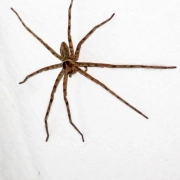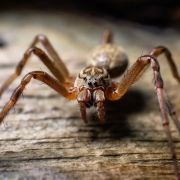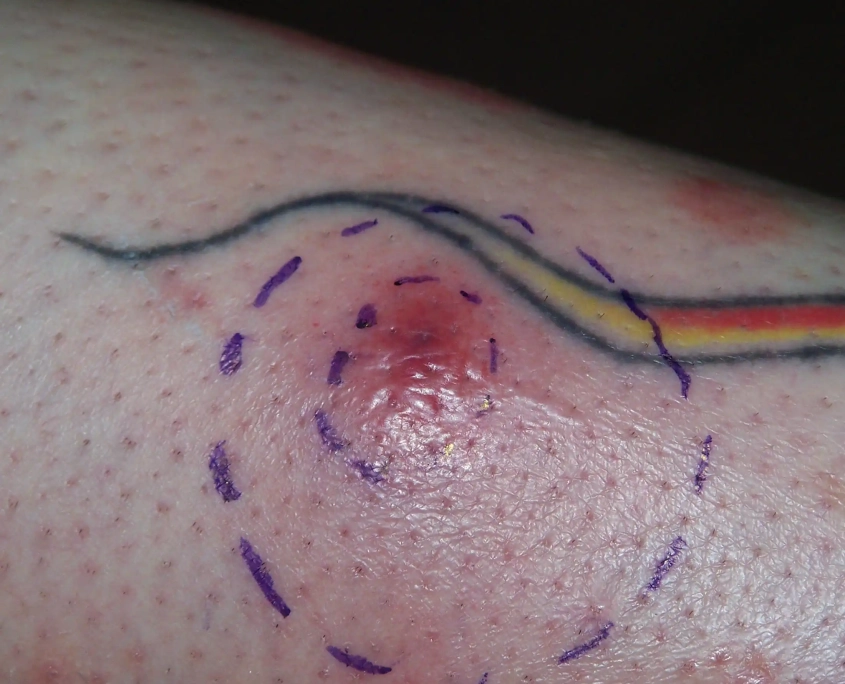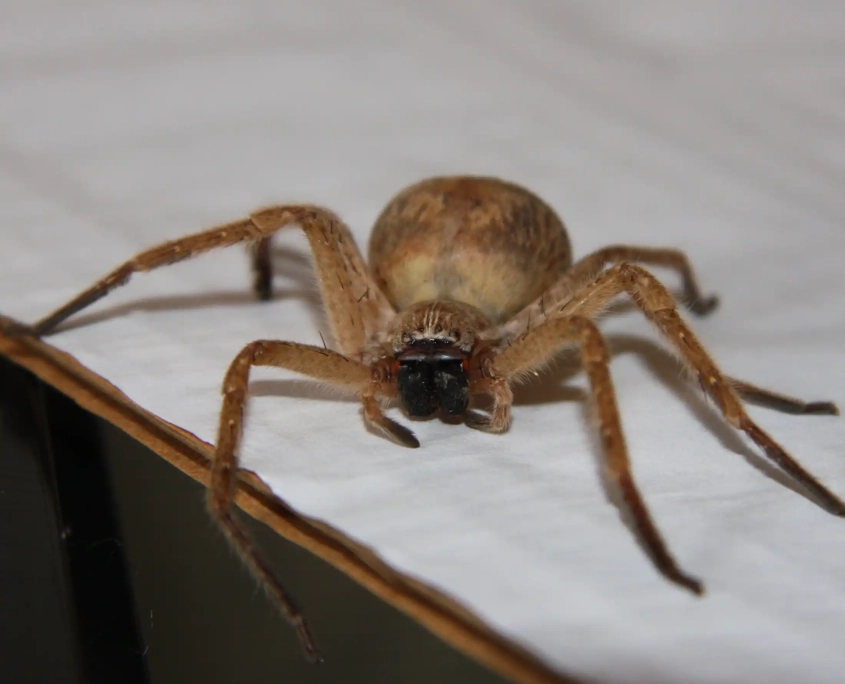Hobo Spider
The hobo spider is from the family Agelenidae. Hobo spiders are generally found in the northwest of the United States, western Canada, and throughout Europe. The hobo spider is also known as the aggressive house spider.
Hobo spiders are moderately large spiders. The male hobo spider is about twelve to eighteen millimeters, and the female is around the same size as the male. The only difference in size is that they have a larger abdomen. This spider usually prefers dry and warm climates and sometimes lives within houses, except in Europe, where they are found primarily outside.
Hobo Spiders Markings
 Hobo spiders are brown in color, have no distinct rings on their legs, and are covered in short hairs. Their abdomens usually have several chevron shaped markings. Usually, these markings are common among other spiders, and some hobo spiders may not have them.
Hobo spiders are brown in color, have no distinct rings on their legs, and are covered in short hairs. Their abdomens usually have several chevron shaped markings. Usually, these markings are common among other spiders, and some hobo spiders may not have them.
Appearance wise, males are notably different from females in that they have two large palps. The females also have these palps but look different, as they are not swollen like the males. The palps, which are the male genitalia, are often mistaken for fangs or venom sacs.
The hobo spider is usually seen running across floors. The males search for female hobo spiders during mid-summer until early fall, so that is the time when they are most likely to be seen.
The hobo spider is a funnel-weaving spider, which means the web that it produces is not sticky, but rather it is meant to be a trip web. The hobo spider will trap insects that cannot maneuver the funnel surface.
 The hobo spider hides in the back of the funnel, waiting for something to get caught in the web. Hobo spiders are sometimes known to build their webs in or around human habitats.
The hobo spider hides in the back of the funnel, waiting for something to get caught in the web. Hobo spiders are sometimes known to build their webs in or around human habitats.
The hobo spider is not naturally aggressive and will generally avoid humans. However, when a hobo spider is tending to their egg sacs, they tend to become even more aggressive and may attack a human at that point.
A hobo spider will usually bite a human due to getting trapped in clothing, in bed sheets, and being trapped next to the skin. The initial bite by the hobo spider usually is not painful. Still, in about thirty minutes, a hard area will appear. Within 15 to 35 hours, the sore will blister. The blister will break in around 24 hours, and the wound left behind generally will heal very slowly.
Hobo Spider Bite
 The hobo spider bite is not considered fatal; however, the spider’s venom is strong enough to cause local pain and also cause tissue death at and near the bite. Because hobo spider bites are often mistaken for the brown recluse spider bite, it is always a good idea to bring in the spider if possible when seeking medical attention, which should be immediately after any spider bite.
The hobo spider bite is not considered fatal; however, the spider’s venom is strong enough to cause local pain and also cause tissue death at and near the bite. Because hobo spider bites are often mistaken for the brown recluse spider bite, it is always a good idea to bring in the spider if possible when seeking medical attention, which should be immediately after any spider bite.
The impact of a hobo spider bite is much like the brown recluse spider. Pain might not be associated with the bite, but a small hard area may appear within 30 minutes of the bite.
This bite area will be surrounded by an expanding red welt reaching 5-15 cm in diameter. Blisters form within 12-48 hours, eventually, crust over the cratered wound. A scab can develop over necrotic tissue that eventually sloughs off. In some cases, tissue loss is so severe that surgical removal of damaged tissue and repair is needed.
The fully developed lesion may reach 3 cm or more in diameter, which may take several months to heal and often leave permanent scars.
The occurrence of systemic illness is variable. However, the most common symptom is a severe headache, sometimes occurring within 10 hours (sometimes ~30 minutes), that does not respond to aspirin. The headaches have been compared to migraines and may persist for a week, sometimes accompanied by nausea, weakness, fatigue, temporary loss of memory, and vision impairment.
For information about myths of the hobo spider, check out Myths about the Hobo Spider by Rod Crawford at the University of Washington
